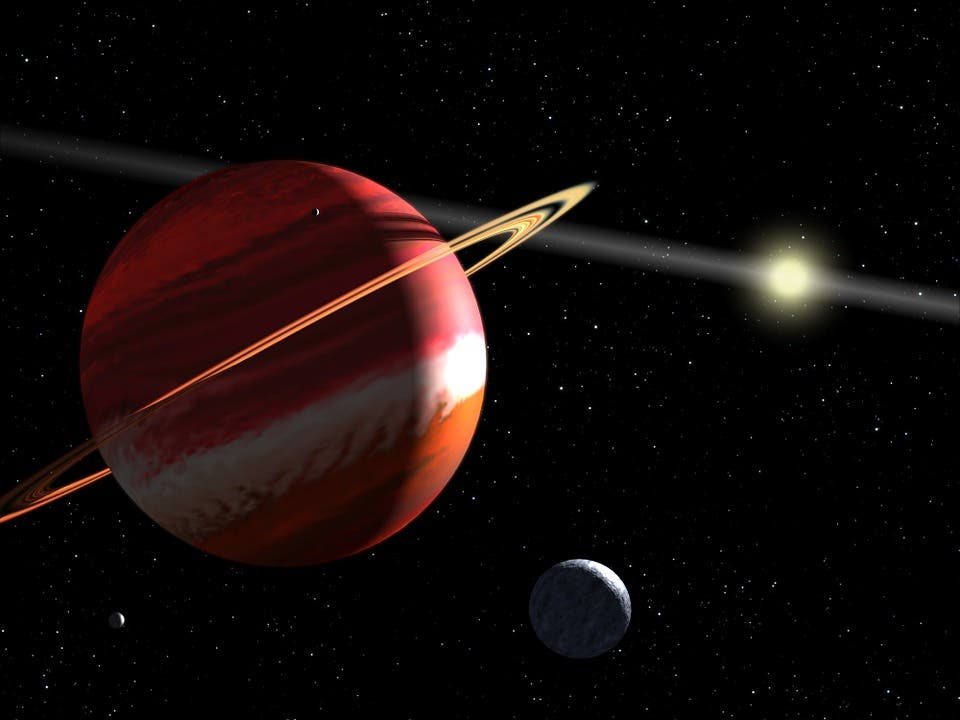The fifth planet from the Sun and owner of the most iconic stormy swirl in the Solar Sistem, Jupiter is nothing if not massive. So massive, in fact, that the planet doesn’t simply orbit our sun, but drags it along for the ride.

What?
It’s all a matter of physics and Newton’s universal law of gravitation. It’s the one which says objects pull on each other with a force proportional to the product of their masses and inversely proportional to the square of the distance between them. So more mass means a stronger gravitational pull, but as you move away from said mass this pull drops exponentially. This is why gravity can keep your feet on the ground but isn’t strong enough to pull every comet in the universe down on our heads.
Now because of this, in theory, whenever two objects in space meet and start orbiting, it’s not one body going round a fixed other — they both move around a central point whose position is determined by the relative masses of the objects. Think of how the Moon causes ebb and flow. It also pulls on the rocks and soil that make up our planet, pulling it as a whole towards the Moon. The ISS also pulls on Earth with its own very weak gravitational field. In both cases, the centre of gravity is so close to our planet’s centre that the effect is negligible. Earth doesn’t seem to move, and the Moon and ISS make perfect circles around it.
When talking about out neighbouring planets, the gravitational centre is so close to the Sun’s centre that we don’t even bother with it. Not even Saturn has a noticeable effect on its position in space. So, for all intents and purposes, we consider the centre of the Sun to be the point around which everything in our system orbits around.
Except Jupiter, Tech Insider reports.
Because of the sheer mass of the gas giant (Jupiter has two and a half times the mass of all other planets in the solar system combined) it’s centre of mass with the Sun is 1.07 solar radii outside the middle of the star. So the central point around which both Jupiter and the Sun orbit, the “barycenter” as it is known, lies 7 percent of the Sun’s radius above its surface. Both the Sun and Jupiter orbit around that point in space.
This gif NASA put together shows what I’m talking about.
This is, in essence, how Jupiter and the Sun move through space together – though the distances and sizes aren’t to scale. Jupiter is still only a fraction of the Sun’s size.






